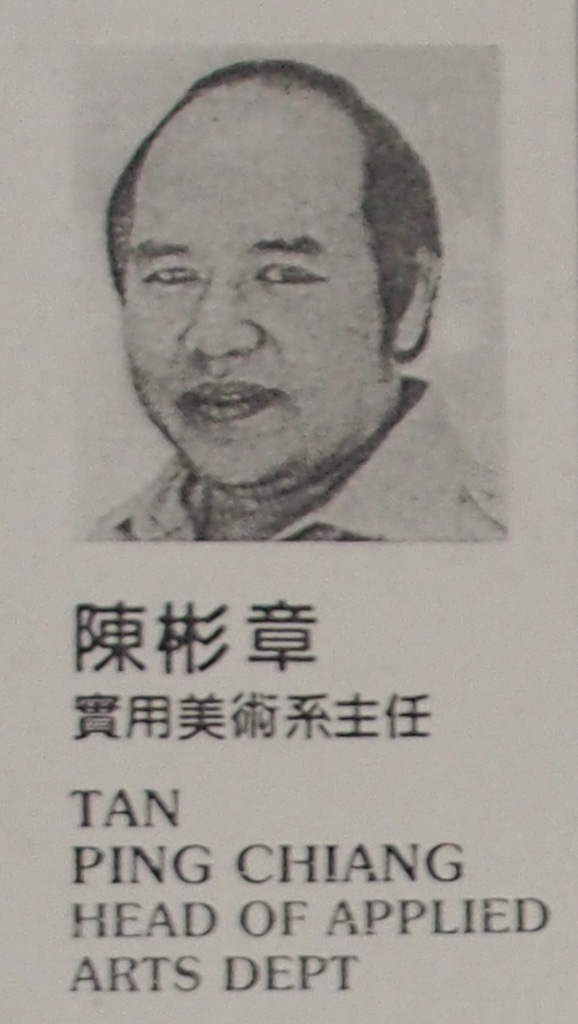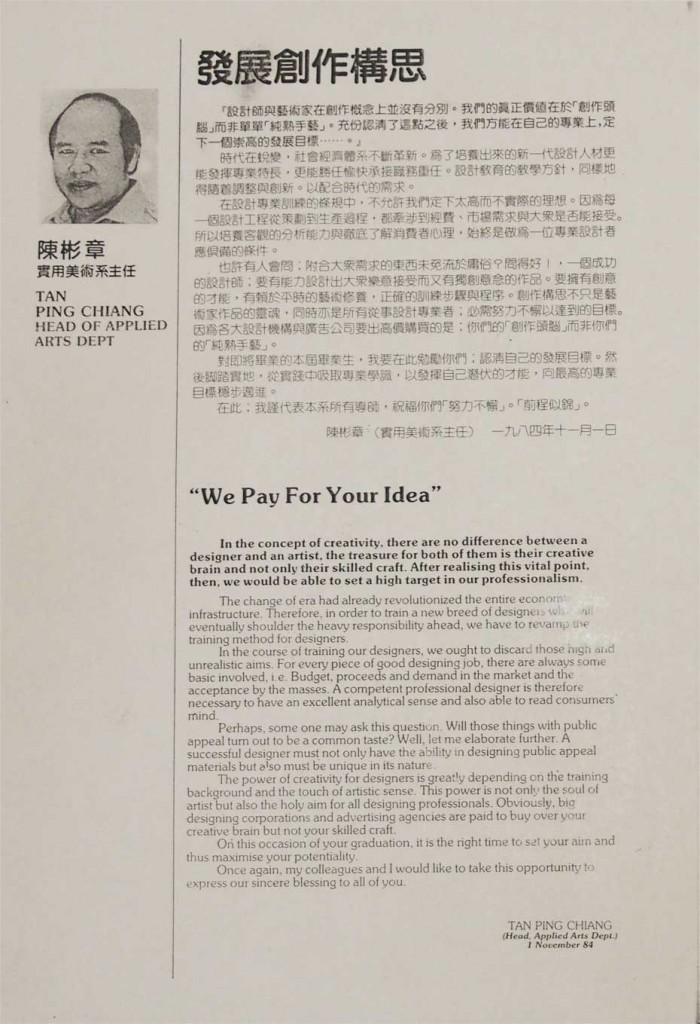These messages of a graphic design educator to his graduates suggest how Singapore design has developed since the 1980s.
Working outside of advertising agencies, producing conceptually-driven work and packaging local products to sell overseas — these are what many Singapore graphic designers do today.
They are also what one Singapore graphic design lecturer urged his students to do some three decades ago at the Nanyang Academy of Fine Arts, one of only three design schools that existed in the city during this time.

As head of the academy’s applied arts department, Mr Tan Ping Chiang (陳彬章), penned messages in its graduation annuals that outlined the role of Singapore graphic designers in the ’80s. In the midst of Singapore’s second industrial revolution in 1980, the former NAFA fine arts graduate urged the academy’s students to look for work beyond the narrow confines of advertising as “agencies were not the only way out” (“廣告公司並非唯一的出路”). Like how he worked as an in-house designer for the government, graphic designers could apply their skills in other sectors of the economy, and mirror the nation’s shift then from labour-intensive industries to those that of high value-added and wages.
To the graduates of 1984, he further elaborated on how this economical shift was changing what employers and clients expected of designers. Summing it up as “We Pay For Your Idea”, the designer who had worked and obtained his diploma in graphic design in England for six years from 1966, stressed the importance of “ideas” and “creativity” and not just craft and skills for the contemporary designer.


Tan had a particular interest in food packaging, and once urged the academy’s graduates to “Dress up our local food products”. Design could help such products sell better in Singapore and overseas, although he cautioned against creating packaging that simply imitated either the west or Japan. Later in life, he wrote a thesis on the value of food packaging in Singapore for his Master of Design from the University of Western Sydney and also illustrated Singapore Delicious and Delirious, a visual tour of the city’s food culture.
This love for food and design has spread to his industrial designer son, Tan Lun Cheak. As one of the founders of design collective Little Thoughts Group, Lun Cheak has created several products that reflect Singapore’s food culture including a steamboat that is also a lamp, and a plate that aids the tossing and turning of the traditional Lunar New Year dish of Yusheng, an act which symbolises good luck and prosperity.
The elder Tan, who turns 73 this year, is now working on his art works and blogs regularly about his travels.